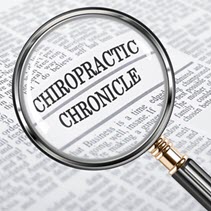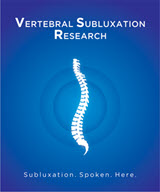New Research Sheds Light on Motor Tics

CLICK HERE to read the research
“Research indicates that minor shifts in the structure of the spine may impact function, suggesting that these structural shifts may be a factor in a number of disorders. Structural shifts may lead to nerve obstruction and could possibly result in a host of health problems such as motor tics” stated Dr. Matthew McCoy, a chiropractor, public health researcher and editor of the journal that published the study. Other chiropractic researchers have reported on similar results and reviews of the scientific research reveal numerous other studies that have shown a similar connection.
“It makes a lot of sense when you think about it” stated McCoy. “It’s reasonable to suggest that if you obstruct or damage the nerves exiting the spine, the result of the obstruction(s) and/or damage can have far reaching implications on the functioning of the body. Through research reports like this we are finding that correcting these structural shifts reduces nerve obstruction, bringing about marked improvement in people who are experiencing a variety of maladies.”
According to researchers the nervous system controls and coordinates all functions of the body and structural shifts in the spine can occur that obstruct the nerves and interfere with their function. By removing the structural shifts, chiropractic improves nerve supply and function.
In this case series a 7-year-old boy with a congenital condition called arthrogryposis, along with asthma and chronic colds, presented to a chiropractic office with motor tics affecting his neck. Arthrogryposis caused him to have frequent falls. His mother reported that the tics had been occurring continuously throughout the day for several weeks. The second patient in this case series, was a 27-year-old male patient, suffering from motor tics in his cervical region for 10 years, sought chiropractic care. The tics began during his high school years, which he associated with prolonged use of a saxophone strap around his neck. Previous treatment with medication caused excessive drowsiness, interfering with his job as a teacher.
The chiropractor examined the younger patient and found structural shifts in his neck, mid back, and pelvis. He also had very tight muscles and restricted range of motion in the neck. For the 27-year-old patient, the chiropractor examined him and found significant restrictions in the cervical, thoracic, and sacroiliac regions. These structural shifts can lead to obstruction of the nerves and it is this obstruction, called vertebral subluxations, that chiropractors correct.
Following chiropractic adjustments, both patients experienced significant improvement as their tics resolved to recur only after falls or during times of high stress; and would resolve again after another adjustment.
The study’s author called for additional research to investigate the clinical implications of chiropractic in this population.
Matthew McCoy, DC, MPH
Annals of Vertebral Subluxation Research
Website: [www.vertebralsubluxationresearch.com]
Email: drmatthewmccoy@gmail.com
Phone: 404.247.2550

Research News
- The 19th International Research and Philosophy Symposium (IRAPS): Bridging Philosophy, Science, and Practice in Chiropractic
- New Study Uncovers the Broad Systemic Benefits of Chiropractic Care on Nervous, Endocrine, and Immune Systems
- The Hidden Power of the Spine: How Vertebral Subluxation Impacts Health Through Systems Biology
- New Study Sheds Light on Vertebral Subluxation and Systems Biology
- Understanding Cervical Spine Movement and Motor Vehicle Accidents













